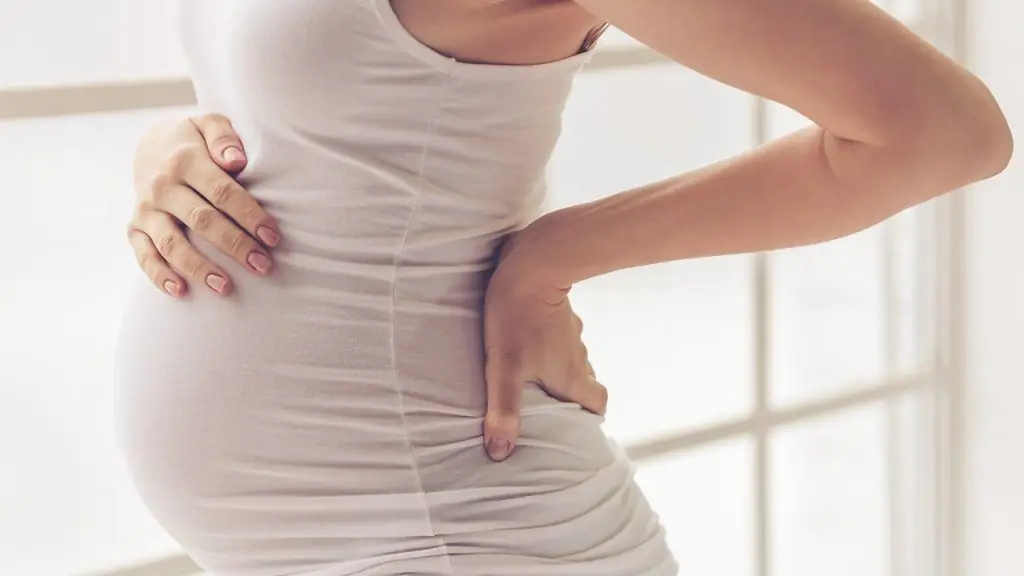2026 Author: Priscilla Miln | [email protected]. Last modified: 2025-01-22 17:55:21
Many new mothers have the misconception that a baby is born with the ability to suckle properly. But in practice it turns out not to be so, and the child takes the breast incorrectly. The task of the mother is to gradually and consistently teach the baby this skill. First of all, you should stock up on patience and free time. It is also worth heeding the advice of breastfeeding experts and pediatricians.
Reasons
There are certain explanations why the baby does not take the breast correctly. The main reasons for this situation are as follows:
- A mother is feeding her baby with a bottle, or a baby is sucking on a pacifier. These factors form an incorrect latch on the nipple, which naturally affects breastfeeding.
- Stagnation of milk. The longer the mother puts off feeding, the harder it is for the baby to latch on. This situation can also arise when the babywhile breastfeeding sucks only one breast. Experts in this case advise to be sure to express milk from the other breast after feeding.
- Wrong posture. It happens that the mother's breast during feeding closes the baby's nose, and it becomes difficult for him to breathe. In this case, the baby begins to spin and releases the nipple from the mouth. A similar situation can occur during a runny nose in infants.
- Baby may refuse to eat if mom has cracked nipples. They bleed and change the taste of milk.
- It is difficult for a baby to suckle at the breast due to physiological characteristics: a short frenulum, facial muscle tone.
- The baby is premature, weak.

Don't forget that there are sloth babies who just don't want to exert themselves, and they quickly fall asleep during feeding. Pediatricians say that in such children the center of hunger in the brain matures rather slowly. Therefore, they add weight more slowly. But worry and stop breastfeeding is not worth it. Sooner or later, this center will mature, and the baby will eat more actively.
Proper breastfeeding
Understanding that the baby is not latching on correctly is quite simple. The main signs of improper nipple latch are:
- women have breast pain while breastfeeding;
- may cause cracked nipples.
Normally, the process of feeding itself should not cause any anxiety and pain to a young mother. The baby must suck on the breastso that the woman does not feel pain: he reflexively lowers his tongue to the lower lip, thereby protecting the breast from painful contact and compression. In this case, the nipple is directed to the sky of the baby, and it captures most of the areola.
How to make a baby eat?
So, if the baby does not take the breast correctly, what should the mother do? Completely refuse to feed? Of course not. First, do not be nervous and calm down. Secondly, do not interrupt attempts to teach the baby to properly grasp the nipple. If a woman wants to maintain lactation and teach her baby to take the breast correctly, then you should heed the advice of experts.

Their recommendations are:
- First you need to find out why the baby began to breastfeed incorrectly.
- You need to breastfeed your baby as often as possible, not only for feeding, but also to soothe or at bedtime.
- Mommy needs to stay calm, not get annoyed and not use force. This can only change the situation for the worse.
- Give up pacifiers and nipples for a while. The baby gets used to sucking from the bottle, as it is much easier to do. Until the baby learns to properly grasp the breast, you can supplement it with a syringe, spoon or pipette. In this case, you need to constantly offer breasts.
- Start feeding not on time, but on demand. Such a method as scheduled feeding is a thing of the distant past. Babies who stay with their mother all the time sleep and eat much better.
- Some pediatricians recommend startingpractice co-sleeping with mom. They say it will help feed them.
- Mom needs to be with the baby as often as possible, take him in her arms, stroke him.
- It is necessary to create comfortable conditions for feeding: choose the right position, drown out all extraneous sounds, turn off bright lights and free the room from unnecessary people. Do not be afraid to experiment with the choice of poses. This will help you choose the right one for you and your baby, in which both will be comfortable.
If mommy can't handle the problem on her own, then you need to seek help from a pediatrician or a breastfeeding specialist.
Choosing a position for feeding
If the baby does not take the breast correctly, then you need to pay attention to the posture during feeding. Perhaps the baby is just uncomfortable, and this is the main reason for improper nipple latch. First you need to take the child in your arms and pay attention to the position of his body and head. The mother's hand is a support for the back and neck of the baby. Some women prefer to breastfeed lying down on their side, in which case the baby lies nearby. There are several positions for breastfeeding a baby that will be comfortable for both the baby and the mother, and ensure the complete release of the mammary glands.

Lying down feeding
Many young mothers prefer to feed their baby in this position. The woman lies on her side, slightly rising on her elbow, the baby is located nearby. Its head is at chest level. The baby needs to be turned to face him and slightlyhold on to the back. You can not lean on your elbow, but put the baby on your arm, as if hugging him. The child takes the breast that is closest to him. When changing breasts, you should roll over to the other side.
Cradle
This is the easiest and most common nursing position. Mom takes the baby in her arms in such a way that his head is located on her elbow, and the hand supports a small body. With the other hand, the woman also supports the child. A variation of this pose is the "cross cradle". The baby's head rests on the mother's left hand, and she holds the head with her right hand. Experts say that if the baby does not take the breast correctly, you need to apply it in this way.

From hand
Mom in this case sits on the sofa or bed. Place a pillow under your back. The second pillow is for the baby. She is placed nearby, and the baby is placed on top so that he can easily reach the nipple. The baby is turned towards him, and his legs are behind his mother. This pose is also called "from under the arm." It is perfect for mothers of twins.
Overhang
If the newborn does not take the breast correctly, you can try the "hanging" position. The child lies in the crib, and the mother gives him the breast while standing, as if hanging over him. Pediatricians recommend this pose for weakened babies who find it difficult to feed, and women with lactostasis. But for prolonged feeding, this position is uncomfortable.
Nipple grip rules
If the baby began to take the breast incorrectly, first of all, the mother needs to pay attention to how he takes the nipple. The correct position when feeding involves finding the nipple at the level of the baby's nose. Intuitively, the baby opens its mouth and grabs the breast. If the baby is having difficulty, then the mother should help him. If the baby succeeded, then the nipple touches the sky. Feeding experts suggest that new mothers do the following test: put a finger in the baby's mouth, and if he pulls it in correctly, a vacuum is created that makes it difficult to easily pull the finger back. The nipple should not slip during feeding.
If a mother hears smacking, then this is the first sign that the baby is suckling the breast incorrectly. Normally, if you look from below, then between the chest and the lower lip of the baby, his tongue should be visible. Another sign that the baby has correctly latch on to the nipple is puffy cheeks. If they are retracted, then the baby took the breast incorrectly. In this case, you should repeat the procedure for applying the baby to the breast. It is also important to ensure that the baby does not rest its nose on the mother's chest. This will make breathing difficult and he will not be able to properly latch onto the nipple.

Signs that a baby is not breastfeeding and swallowing air are as follows:
- child makes extraneous sounds;
- his mouth is not wide open;
- there is one nipple in the baby's mouth (in this case, the areola is visible);
- after feeding the nipple remains the sameforms;
- mom feels pain;
- Baby gains little weight.
What could be the consequences? If the baby takes the breast incorrectly, he does not eat up, as he does not receive the right amount of milk. As a result, the child becomes restless, capricious, his sleep is disturbed.
How to teach a baby to latch properly?
There are several ways to get good sucking.
- For the baby to open his mouth, you need to slightly press on the chin.
- You can slide the nipple over the baby's lips, after which he will definitely grab the nipple.
- The nipple should be directed not to the lips, but to the baby's nose. This will ensure the correct grip.
Some babies need constant training until they learn to latch on properly. Reviews of mothers say that there have been cases when you had to make 20-30 attempts in one application. Sometimes the training was delayed even for 2-3 months. The main thing is not to despair and keep trying. The child will learn sooner or later, and feeding will not be a burden.

It is equally important to know how to get the nipple out of the baby's mouth if necessary. After all, it happens that the baby falls asleep during feeding and the mother is afraid to wake him up. The only way that the baby will not be disturbed is to insert the tip of the little finger into the corner of the baby's lips and gently open the gums.
How to understand that the baby is full?
A breastfed baby may gain weight more slowly than artificial babies. This is consideredthe norm. The main thing is that he completely sucked out the necessary norm. If a newborn does not take the breast correctly, then he may not have enough milk, and weight will gain even more slowly. To understand if the baby is getting enough milk, the mother needs to analyze the following:
- The amount of urine. Normally, 4-5 diapers should be changed per day (completely wet).
- Daily stool, which should be liquid in the baby and at least 5 times a day. Feces turn light brown.
- A woman feels her breasts are completely empty after feeding.
A well-fed baby worries less and sleeps better. But this criterion is not decisive, since other factors can also affect sleep.

So, if the baby does not take the breast, do not be afraid. Mom must be patient, persevere and try to keep breastfeeding. It is important to continue to latch your baby to the breast, gradually teaching him how to properly latch on the nipple until he succeeds.
Recommended:
Synechia of small lips in girls: how to recognize, treatment methods

Adhesion, or synechia, of the labia minora in girls is a fairly common occurrence. It occurs mainly in infancy or somewhat later, but up to 6 years. The disease is asymptomatic. It can be discovered by chance during childcare or during a medical examination by a doctor
Wife takes out the brain: reasons for what to do, tactics of behavior, advice from psychologists

Does your wife mind-blowing? Women are unique beings. They are not always aware of their own words. Girls talk a lot, and sometimes for many of them this process happens for the sake of the process itself. Do not be offended by your beloved. Better use tips that will help minimize situations in which the wife takes out the brain
Grasping reflex: concept, definition, norm and pathology, identification of problems, necessary treatment and physical procedures

The infant's grasping reflex is an ancient phylogenetic mechanism. The ability to hold objects in the handles initially leads to the world of games, and then the baby learns to eat on his own. The grasp reflex is innate. By the age of one, this reflex becomes conscious and turns into a coordinated and conscious action. In this article, we suggest that you familiarize yourself with the stages of development of the reflex, identify the causes of a weak or absent reflex
Placenta accreta: symptoms, causes, diagnostic methods, possible risks for mother and child, treatment methods and recommendations from gynecologists

The placenta is an embryonic organ that allows the fetus to receive oxygen and nutrition during pregnancy. In the normal state of the woman and the correct course of pregnancy, the placenta is attached at the top of the uterus and remains there until the very time of childbirth. After the birth of a child, it exfoliates from the wall of the uterus and comes out
Change of the breast during pregnancy. What does the breast look like during pregnancy?

While carrying a baby, a woman's body undergoes tremendous changes. Some of them remain invisible to others, while others are visible to the naked eye. The reproductive system is the first to signal the birth of a new life in a woman's body. About how breast changes occur during pregnancy, in the article. Consider what factors provoke their appearance and what symptoms should alert

